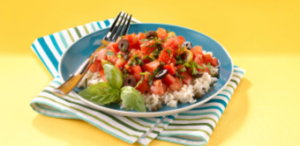Before you start an exercise program or routine, a thorough medical history and evaluation are recommended so you and your doctor can identify limitations on certain exercise movements. It is highly recommended that you receive proper instructions for performing these exercises before beginning your exercise routine or program. Anaerobic exercise is not recommended for some people with certain heart or orthopedic conditions. Discuss this with your doctor.
Types of Exercise
Types of Exercise
The two basic types of exercise include:
- Aerobic exercise: any activity involving large muscles, done for an extended period of time. Aerobic exercise is done primarily for cardiovascular fitness and weight loss.
- Anaerobic exercise: any activity that does not require oxygen for completion of movement. Usually refers to resistance training. Anaerobic exercise is done primarily for increased muscle mass and toning.
Aerobic Exercise
Aerobic exercise has three important parts:
- Warm-up – three to five minutes of exercise at a lower intensity (for example: speed or grad for treadmill) to warm up your muscles and slowly increase your heart rate
- Conditioning – aerobic exercise conducted for a specific duration (e.g. 30-45 minutes) in which the target heart rate is achieved and maintained.
- Cool-down – three to five minutes of exercise at a lower intensity to bring down your heart rate and lessen risk of injury
- Mode — The type of activity you choose to do. Activities should include those that work the large muscles, such as walking, jogging, swimming, aerobic dance, or cycling. There are many types of exercise you can do. Find an activity you enjoy and will tolerate long term. Recommended: any activity that you enjoy.
- Intensity — How hard you work for the duration of the activity. Recommended target heart rate: 60% to 80% of your predicted maximum heart rate. (Predicted maximum heart rate = 220 minus your age).
For example: a 45-year old person’s maximum heart rate would be 220-45 or 175; the target heart rate range (60%-80% of maximum heart rate) would be from 105-140 beats per minute. Another way to determine the intensity of your activity is the Rated Perceived Exertion Scale (https://my.clevelandclinic.org/health/articles/rpe-scale-heart-health) (RPE).
Those with heart disease should discuss exercise with their physician. Some heart conditions may require a modified or supervised exercise program. Medications may have an effect on heart rate; therefore if you are taking any cardiac or blood pressure medications, ask your doctor if they have any impact on your target heart rate.
- Duration – Length of time of the activity. Recommended: 30 to 60 minutes, depending on your goals.
- Frequency – The number of days per week that you exercise. Recommended: three to seven days per week, depending on your goals.
The American Heart Association (AHA) guidelines call for a minimum of 30 minutes of aerobic physical activity performed at moderate intensity (60%-80% maximum heart rate), either in one continuous period or in intervals of at least 20-minutes duration on most — preferably all — days of the week. This is the amount called for to reduce the risk of coronary disease. It is equivalent to briskly walking at least 1.5 miles per day or raking leaves for half an hour. For weight control, you may need to increase the amount of time you exercise to burn more calories.
Anaerobic Exercise
Anaerobic exercise involves using free weights or machines to build muscle mass and tone.
- Mode – The activity that you choose to work a particular muscle group.
- Intensity – The amount of weight you lift during a set.
- Repetition – A complete movement of a particular exercise.
- Sets – A group of repetitions. For toning, 12 to 20 repetitions with lighter weights are usually recommended. In contrast, fewer repetitions (such as 8 to 12) with heavier weights are performed to build muscle mass.
- Recovery – The amount of time you rest in between sets. The recovery ranges from 0 to 180 seconds.
- Frequency – The number of days per week that you perform strengthening exercises. Strengthening exercises should be performed with a day or two of rest in between workouts.
Set Goals
Exercise advertisements often target simplified exercise routines and spot reduction. Some exercise advertisements sell the belief that one machine will work your entire body and give you the results you need. Some machines are good for cardiovascular conditioning; however, they may not be good for other reasons, such as joint or balance limitations. To establish a proper exercise routine, you need to follow a few basic guidelines.
Find out what the recommended exercise guidelines are for your personal health condition
Before you start an exercise program or routine, a thorough medical history and evaluation are recommended so you and your doctor can identify limitations on certain exercise movements. It is highly recommended that you receive proper instructions for performing these exercises before beginning your exercise routine or program. Anaerobic exercise is not recommended for some people with certain heart or orthopedic conditions. Discuss this with your doctor.
Set goals
A complete exercise program requires three components:
- Stretching – to enhance flexibility of your joints and limit injury
- Aerobic or conditioning – to help you lose weight and improve cardiovascular fitness
- Anaerobic exercise or toning – to help you build or tone muscles
When setting goals, it is important to design a program that you can do in a schedule that you will definitely keep. Look at your calendar and schedule in your exercise sessions. You do not have to do all three components of the exercise program every day, but to lose weight the most important component will be aerobic conditioning. If you need to start by exercising in 10-minute increments, that’s OK. Every week or so, your goal will be to increase the amount of time you exercise until you are exercising at least 30 minutes per session.
Track Success
Exercise advertisements often target simplified exercise routines and spot reduction. Some exercise advertisements sell the belief that one machine will work your entire body and give you the results you need. Some machines are good for cardiovascular conditioning; however, they may not be good for other reasons, such as joint or balance limitations. To establish a proper exercise routine, you need to follow a few basic guidelines.
Find out what the recommended exercise guidelines are for your personal health condition
Before you start an exercise program or routine, a thorough medical history and evaluation are recommended so you and your doctor can identify limitations on certain exercise movements. It is highly recommended that you receive proper instructions for performing these exercises before beginning your exercise routine or program. Anaerobic exercise is not recommended for some people with certain heart or orthopedic conditions. Discuss this with your doctor.
Keep track of your success
There are several ways to monitor your success:
- Improvement in endurance – keep an exercise diary. Note changes in how your feel with your exercise, such as: being able to go farther, having to increase the intensity of the activity to achieve your target heart rate, feeling less short of breath, etc.
- More room in your clothes – you should feel better in your clothes. They should fit better or you may notice they are getting bigger (you are getting smaller!).
- Keeping measurements – Keeping records of your weight or inches may be helpful to track your success. However, some people get discouraged if they do not see big changes. While your fat level may be decreasing, you may be increasing in lean body mass. Since muscle weighs more than fat, it may appear that you are not losing weight, but maybe even gaining weight. Use other measurements for success instead of weight loss such as toner legs and arms, decreases in waist, hip or arm measurements, increased energy levels or improvements in your overall health.
What is a body composition test?
A body composition test is a way to determine your current percentage of body fat. It is also a way to track progress during your exercise program. A body composition test is more accurate in determining your ideal body weight. The ideal range for females is 18 to 26% body fat. The ideal range for males is 12 to 17% body fat.
When to Call the Doctor
Exercise advertisements often target simplified exercise routines and spot reduction. Some exercise advertisements sell the belief that one machine will work your entire body and give you the results you need. Some machines are good for cardiovascular conditioning; however, they may not be good for other reasons, such as joint or balance limitations. To establish a proper exercise routine, you need to follow a few basic guidelines.
Find out what the recommended exercise guidelines are for your personal health condition
Before you start an exercise program or routine, a thorough medical history and evaluation are recommended so you and your doctor can identify limitations on certain exercise movements. It is highly recommended that you receive proper instructions for performing these exercises before beginning your exercise routine or program. Anaerobic exercise is not recommended for some people with certain heart or orthopedic conditions. Discuss this with your doctor.
When to call the doctor
If you have any of the following symptoms while exercising, stop the activity and rest. If the symptoms do not go away, call your doctor:
- Heart palpitations (feeling of “skipped” heart beat or irregular heart beat)
- Chest pain
- Increased shortness of breath
- Dizziness or lightheadedness
- Pressure or pain in your chest, neck, arm, jaw or shoulder
- Weakness
- Unexplained weight gain or swelling (Call your doctor right away)
© Copyright 1995-2018 The Cleveland Clinic Foundation. All rights reserved.











